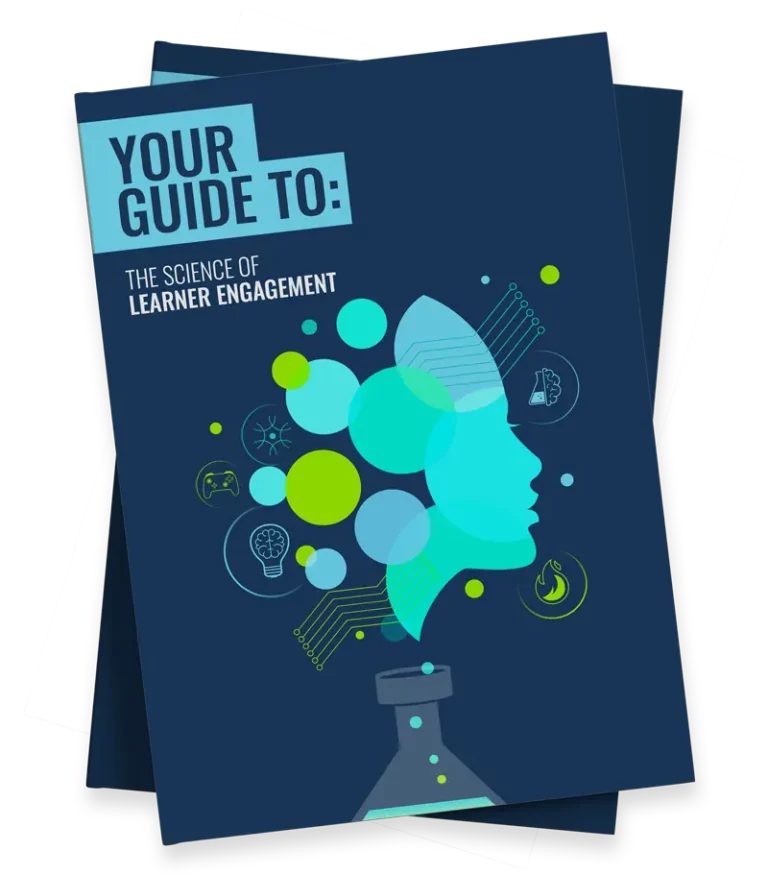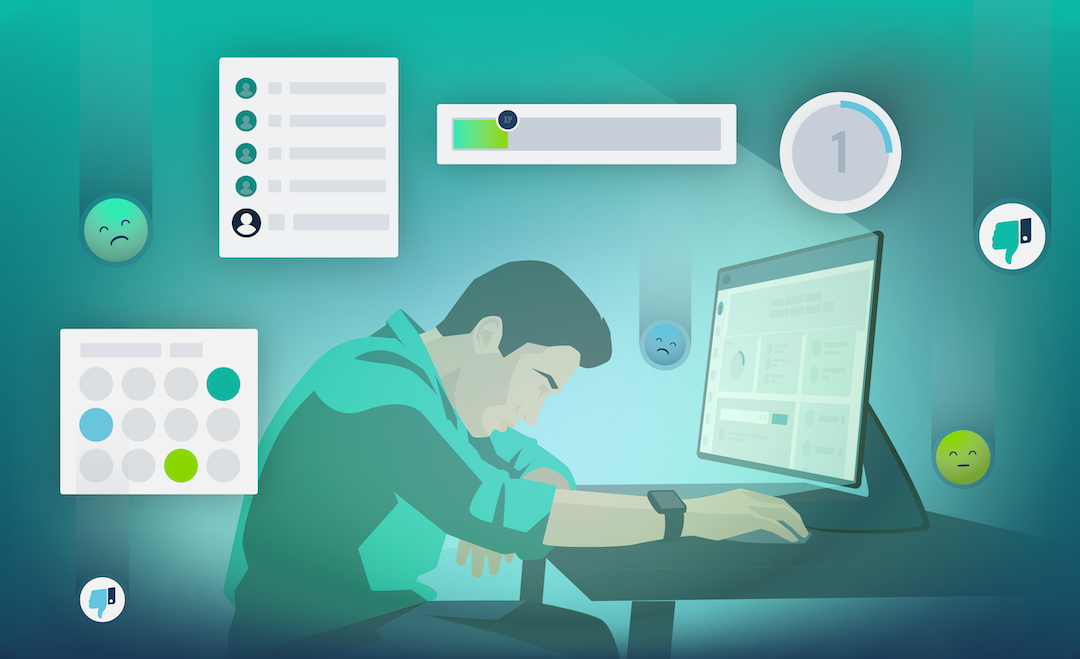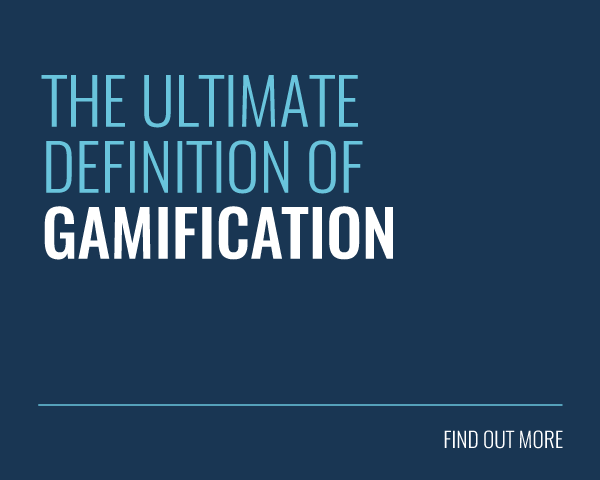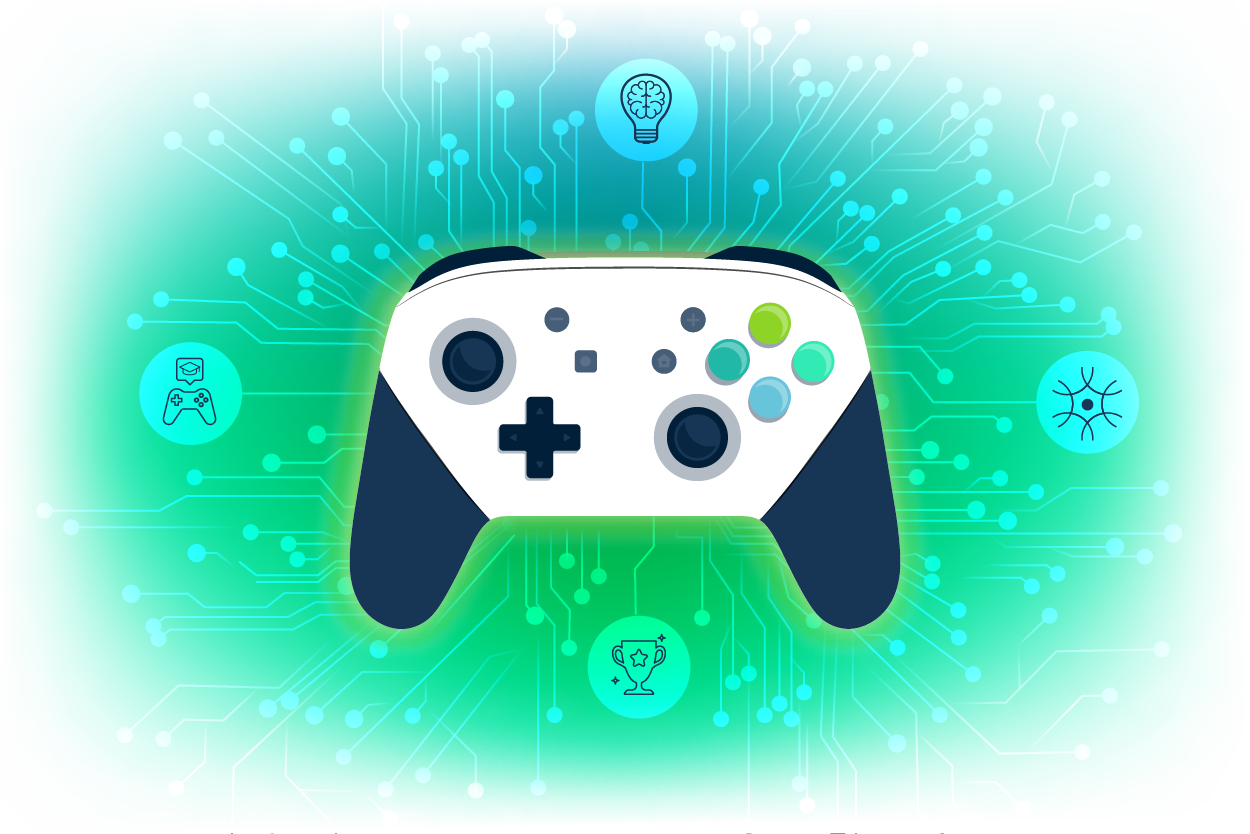
Learner engagement is the holy grail of training for a simple reason: without it, a staggering 90% of corporate training fails to impact job performance. We need a hero capable of capturing attention and driving real results. We need gamification.
At Growth Engineering, we’re card-carrying members of the gamification fan club. Why? Because for over 20 years, we’ve seen it work. And we’re not alone. Just ask the 95% of employees who prefer learning this way.
But why are game mechanics so uniquely effective? In this article, we’ll first ground ourselves in the neuroscience of gamification, including the dopamine-driven loops that hook our attention.
Then we’ll explore how game mechanics satisfy our deepest psychological needs and reveal how artificial intelligence is set to amplify their power. The next level of engagement awaits. Ready to play?
What is Gamification?
Contrary to popular belief, gamification isn’t just about slapping points, badges, and leaderboards onto a learning module and calling it quits. Instead, it’s a strategic method that harnesses the power of play to drive motivation, learning, and behavior change.
So, let’s boil it down to the simplest possible definition. Gamification is the ‘use of game design elements in non-game contexts’. Naturally enough, as learning professionals, the context we are most interested in is learning and development (L&D).
Let’s bring this concept to life with a few examples:
| Game Element | Non-Game Context |
| Points & Scores | Tracking progress on an LMS module |
| Badges & Achievements | Receiving a certificate or digital reward for skill mastery |
| Leaderboards & Competition | Ranking users based on course completion or quiz scores |
| Levels & Progression | Advancing from ‘Beginner’ to ‘Expert’ in a training programme |
| Narrative & Storytelling | Framing a compliance course as a secret agent mission |
Gamification: The State of Play
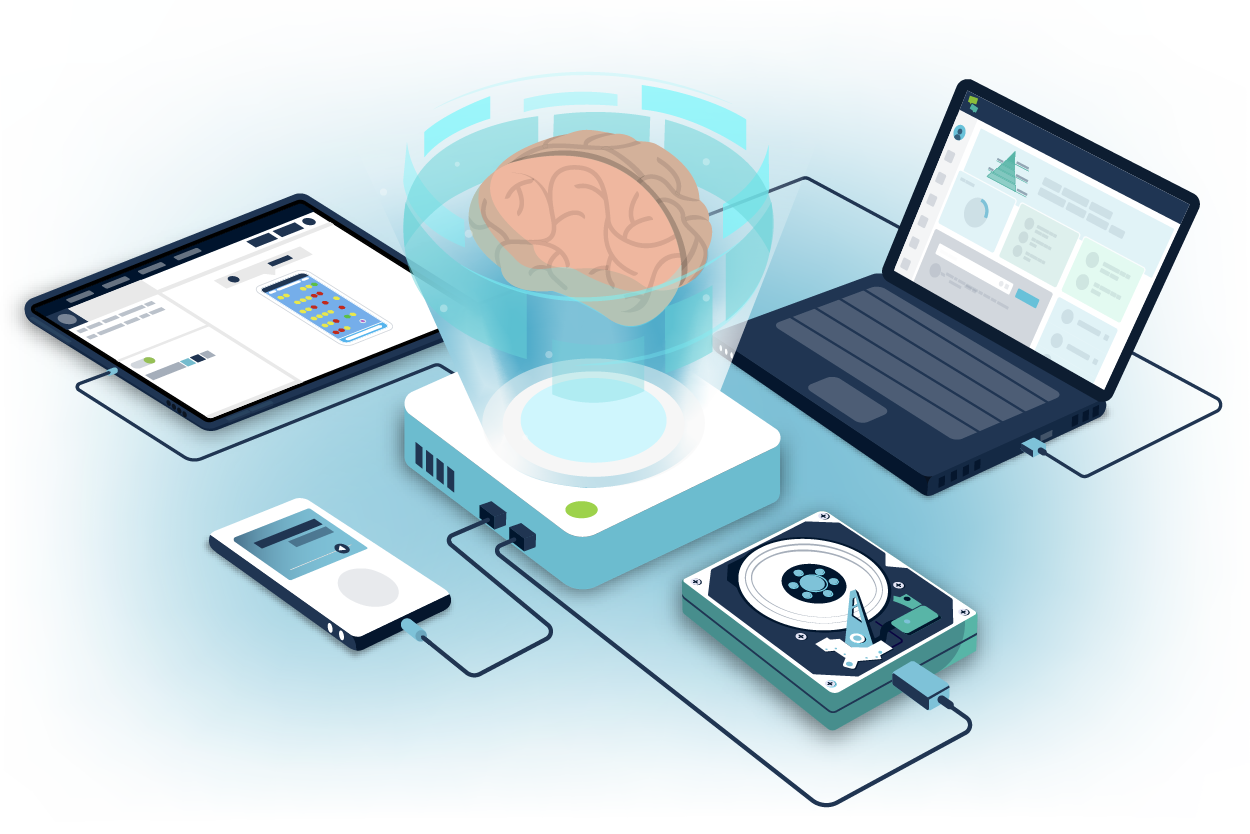
Gamification is no longer a fringe concept. It’s a core strategy across education, corporate training, health, and marketing. That feeling of satisfaction from earning a Starbucks Reward or protecting your Duolingo streak? That’s gamification in action.
But it’s also important to acknowledge the current gamification landscape. While the concept enjoyed massive popularity in the early 2010s, it famously entered the ‘Trough of Disillusionment’ on the Gartner Hype Cycle by 2014.
Even today, we’re bombarded by articles with titles like:
- Gamification is not Working: Why?
- When Gamification Goes Wrong
- Gamification is Exploitation
- Is Gamification Dead?
Clearly, something is rotten in the state of Denmark. However, this drop in enthusiasm wasn’t because gamification failed. It was because early, poorly designed projects did. Too many of these systems felt like a hollow checklist with no real-world relevance. Is it any wonder that users checked out?
The good news is the hype cycle is behind us. We can now shake off the dust of past failures and move forward, empowered by what we’ve learned. We now know what works and more importantly, we know why it works.
But before we dig into this ‘why’, let’s highlight a few gamification success stories.
The Data-Driven Proof for Gamification
The real power of gamification lies in its ability to turn psychological principles into measurable learning and business outcomes. The following studies demonstrate its impact across engagement, motivation, and retention in a variety of different contexts.
- Engagement Boost: Gamified environments boost learner engagement by up to 60% compared to non-gamified approaches.
- Motivation & Drive: 83% of workers consuming gamified content feel motivated, compared to only 61% completing regular training.
- Speed & Efficiency: Gamification can accelerate time-to-competency by reducing training time for new hires by 50%.
- Workplace Productivity: As much as 90% of employees report that gamification enhances their personal productivity at work.
- Skill Mastery: Gamified training has been shown to result in 14% higher scores in skill-based assessments.
- Better Results: This meta-analysis of gamification across various educational settings demonstrates a significant positive effect on learning outcomes.
All this evidence confirms one vital truth: Gamification is not an optional extra. It’s a validated, business-critical strategy. Its success lies in its ability to satisfy the brain’s deep-seated need for challenge, progress, and mastery.
We’ll explore the neurological foundation for this in the next section.
Your Brain on Gamification
Gamification works because it’s not just a design trend. It’s a uniquely effective psychological strategy that directly interfaces with powerful systems within the human brain. So, let’s take a close look at the neuroscience of gamification.
1. The Dopamine-Reward Loop
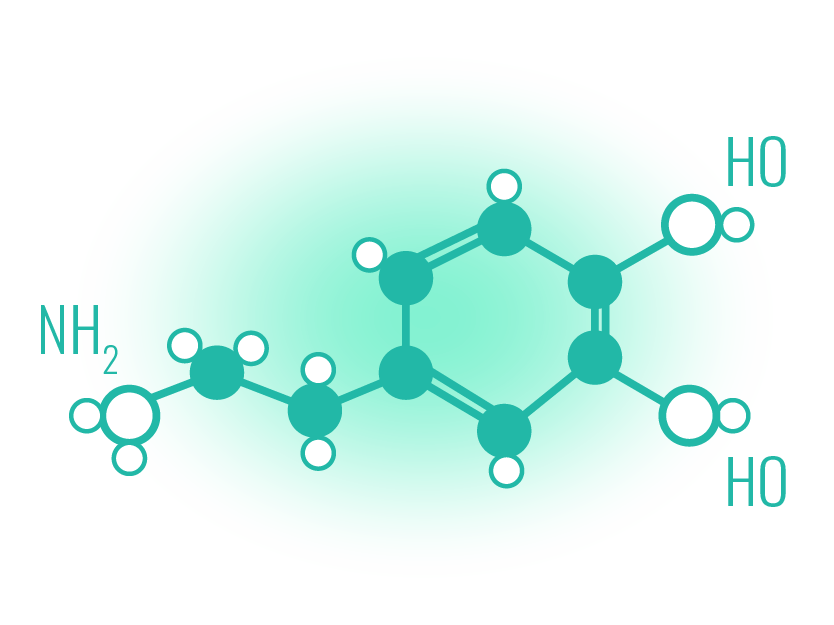
The entire reason we get hooked on anything, from learning to logging in, is the brain’s reward pathway: the mesolimbic circuit. This system is powered by the neurotransmitter dopamine, which is widely dubbed the ‘pleasure chemical’. However, that label is a misnomer.
In reality, its true role is far more critical: it drives seeking behavior and anticipation. Dopamine is released not when you get the badge, but when you are about to earn it. As you might expect, this creates a positive feedback loop that reinforces the desired action.
Put differently, you could say that dopamine generates motivational salience. It doesn’t deliver pleasure (that’s the job of endorphins). Instead, it’s the chemical magnet that tags a learning objective (or associated reward) as important. This forces your attention, ramps up your effort, and compels you to take action.
When you add game mechanics to a learning environment, you offer your learners a compelling set of continuous, immediate, and variable rewards. This frequency keeps the dopamine loop active, driving motivation and ensuring the learner persists in their effort.
2. The Cognitive Benefits of Gamification
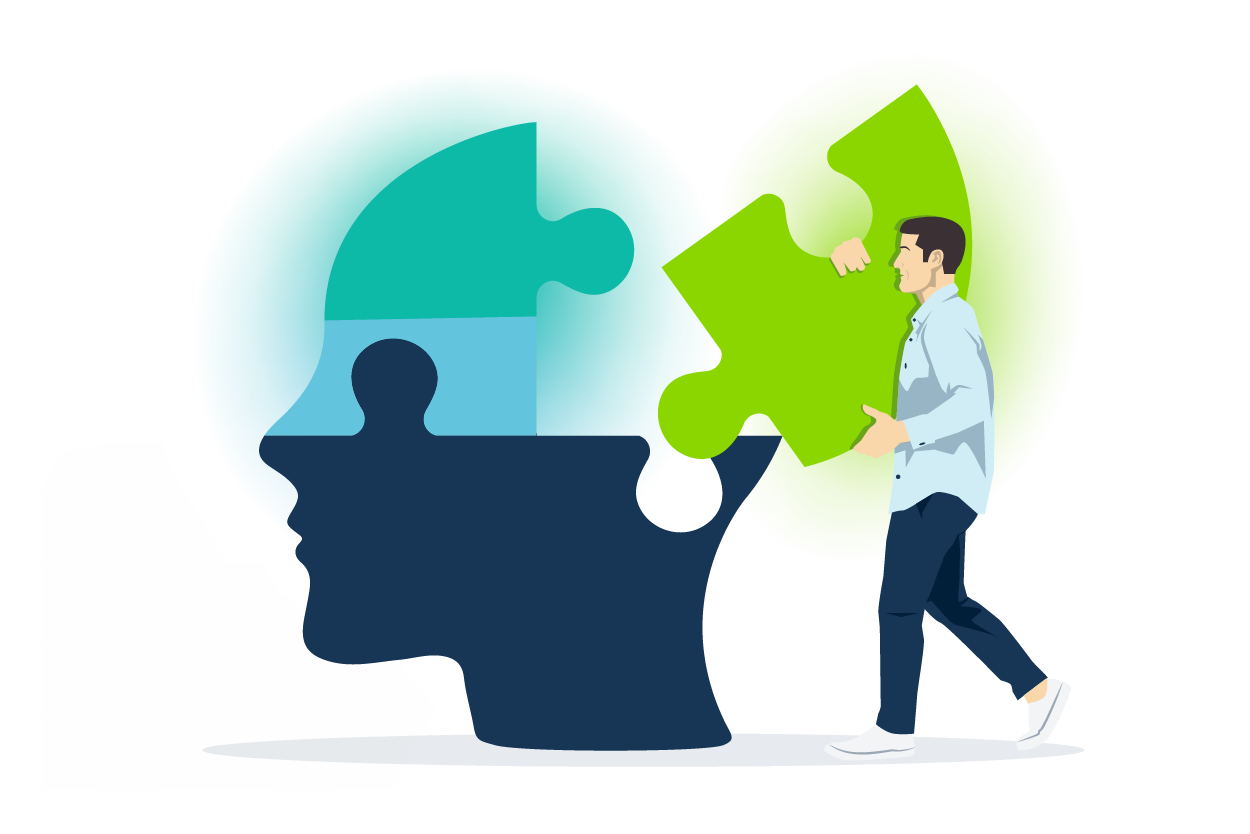
Gamification works so well because its design is a perfect match for how your brain learns and remembers things. This gives your cognitive functions a helpful framework to build from. Here’s two specific examples of this in action:
- Narrative: Many gamified solutions incorporate storytelling elements like avatars, thematic quests, and sequential narratives. This is because your brain (especially the hippocampus) is hardwired to remember stories that make us feel something. By supporting this narrative focus, gamification makes your content more meaningful and memorable.
- Chunking: Complex or lengthy material can quickly overwhelm our working memory, leading to cognitive overload. Thankfully, gamification mitigates this by breaking training material down into bite-sized levels. What’s more, seeing a progress bar fill up and getting instant feedback means you don’t have to waste energy tracking your own progress.
3. Achieving a Flow State

A fully optimised gamified learning environment excels at engineering Flow states.
This concept, coined by the psychologist Mihaly Csikszentmihalyi, is a psychological state of deep immersion where distractions fall away because the challenge of a task is perfectly balanced with the user’s skill level.
Like Vygotsky’s Zone of Proximal Development, Flow is the learning ‘sweet spot’. If a task is too easy, you risk boring your learners. Similarly, if it’s too hard, your audience may become anxious and choose to throw in the towel.
Gamification supports this balance by providing constant, adaptive real-time feedback that keeps the learner well within this perfect median. Progress bars, scores, and ranking systems let learners know exactly where they stand, while levels help to ramp up the difficulty as necessary.
When a learner is in this state of Flow, their attention is fully deployed, cognitive load is managed, stress is reduced, and learning becomes not just effective, but intrinsically enjoyable. You’ve effectively won the learning lottery.
Gamification and Motivation
While neuroscience explains how gamification sparks immediate engagement, psychology explains why that engagement lasts. Indeed, the most powerful gamification strategies go beyond quick chemical hits and focus on fulfilling fundamental human needs.
With this in mind, let’s kick off this section by examining a highly influential theory of motivation.
1. Intrinsic Drive Through Self-Determination Theory
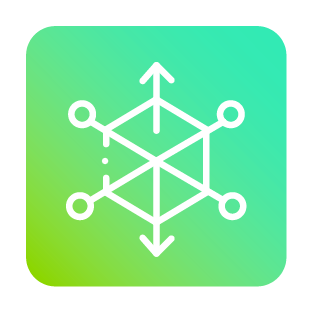
To understand why gamification works so well, we can look to Self-Determination Theory, as developed by psychologists Edward Deci and Richard Ryan. Simply put, their research shows that people are most motivated, productive, and satisfied when three basic psychological needs are met.
And guess what? Gamification nails all three:
- Autonomy: We all crave a sense of control over our actions. Gamification taps into this by offering learners autonomy over parts of the experience. This can be as simple as selecting an avatar or as impactful as picking a learning pathway. Consequently, this sense of ownership transforms mandatory training into a self-directed learning adventure.
- Competence: We are wired to crave the feeling of progress and mastery. Gamification supports competence through scaffolded progression. Think levels, skill trees, and milestone badges. These mechanics offer visible proof of learners’ growing mastery and skill development. And this tangible sense of improvement fuels the desire to keep learning.
- Relatedness: Finally, we are social beings, motivated by a sense of belonging. Gamification addresses this by weaving in social components like team challenges and peer recognition. This converts solitary effort into a collaborative experience, making the learning process more engaging and socially rewarding. In turn, this helps to solidify the desired behavior.
2. Shaping Behaviour and Forming Habits
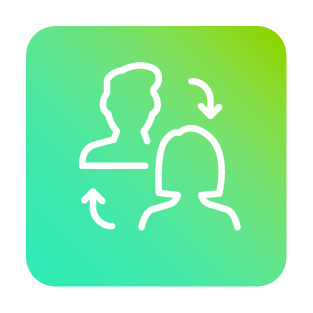
Behaviour change doesn’t come easy. In fact, a landmark 2009 study led by Philippa Lally at University College London found that it takes an average of 66 days to form a new habit. Thankfully, gamification is adept at transforming sporadic learning attempts into reliable daily routines.
After all, the most effective game elements are small in nature, occur frequently, and are highly addictive. Short modules or micro-challenges minimise the effort required to get started, making the habit feel less daunting. What’s more, each tiny success provides a dopamine spike, helping to build momentum and consistency.
Streaks (like in Duolingo or Snapchat) are particularly helpful here. By rewarding learners for completing a series of consecutive actions, you create commitment bias. Once a streak has been built up, the fear of losing that progress becomes a powerful motivator, ensuring regular engagement.
Just remember: the goal here is to leave learners feeling energised, not burned out!
3. Avoiding the Overjustification Effect
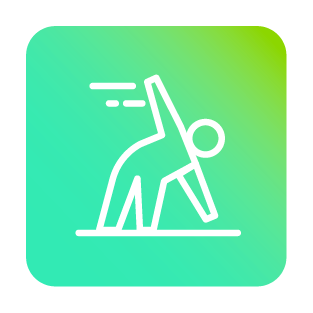
We can’t talk about motivation without acknowledging the risk of the overjustification effect. This psychological phenomenon occurs when excessive extrinsic rewards (like points and badges) muscle out a person’s natural intrinsic motivation for a specific activity.
This effect was first demonstrated by Edward Deci (yes, the same mastermind behind Self-Determination Theory), who found that rewarding study participants for solving puzzles actually reduced their intrinsic interest in the task.
Why does this matter? Because studies show that intrinsic motivation has 3x greater impact on engagement levels than extrinsic motivators.
If your gamified rewards are purely superficial or act as meaningless tokens without any real-world relevancy, you risk your learners shifting their focus. They may become so fixated on earning rewards that the actual goal of learning gets overshadowed.
With this in mind, a modern gamified solution must focus on purpose-based design. Rewards should not be arbitrary. That means no badges simply for logging in to your learning management system.
Instead, gamified rewards should be linked to meaningful achievement, such as acing a difficult assessment or completing a complex simulation. In turn, this creates a strong sense of purpose, which naturally drives engagement even higher.
Gamification in the AI Era
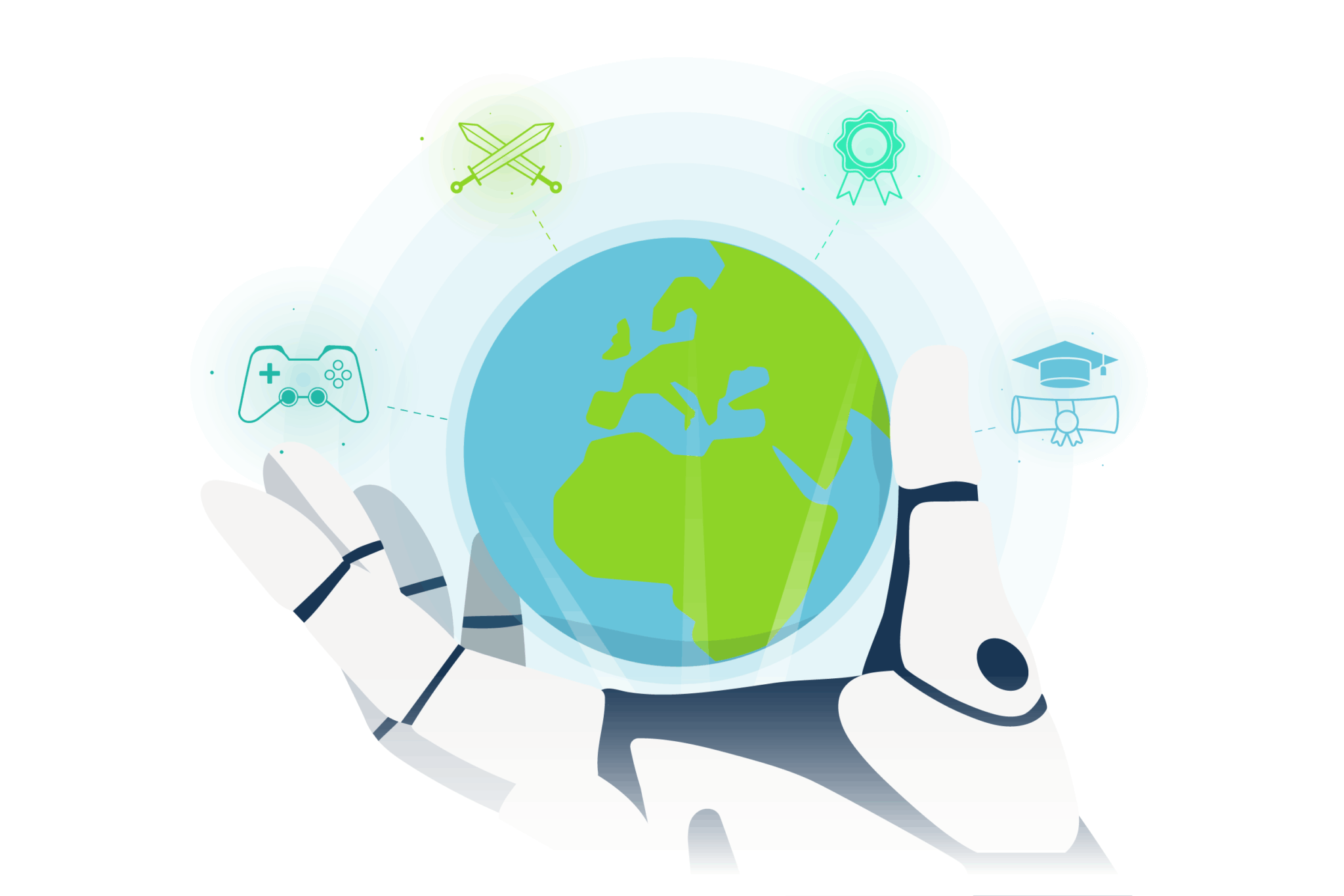
The advent of artificial intelligence (AI), means that gamification is no longer a static solution. Instead, AI can now act as the ultimate adaptive game master, optimising learning for engagement, pace, and difficulty. Let’s explore how it does this.
1. Adaptive Gamification
One of the major pitfalls of traditional gamification is its ‘one-size-fits-all’ design. Since every learner responds differently to game mechanics, these simple systems often lead to mixed results. Thankfully, AI can solve this issue through deep personalisation:
- Hyper-Personalisation: AI doesn’t just track learner data, it understands it. By analysing an individual’s pace, preferences, and even when they choose to disengage, these systems can then dynamically adapt the learning journey in real-time. This creates a truly custom experience for each learner.
- Sustained Flow: We know that Flow state requires the perfect balance of challenge and skill. Here, AI can act as a master facilitator, continuously assessing a learner’s ability and delivering the perfect challenge at the perfect moment. The result? A learning experience free from both boredom and anxiety.
- Personalised Rewards: AI can also move beyond generic points and badges by identifying a learner’s unique motivational profile. By establishing whether a user is driven by competition, the pursuit of mastery, or social recognition, it can tailor rewards and challenges accordingly.
At its best, an AI-driven gamified solution is like the Dungeon Master (DM) of corporate learning. It reads the room, tailors the story to the players, and balances the difficulty in real-time, ensuring every learner feels valued and motivated.
2. Catering for Future Skills
The AI boom isn’t just changing the tools we use, or optimising our output. It’s also redefining the skills we value. Indeed, as AI automates routine tasks, our uniquely human strengths become our greatest asset.
Fortunately, this is yet another area where gamification shines. In a sense, gamified learning environments are dynamic training grounds for the soft skills that set us apart: creativity, empathy, and complex problem-solving.
After all, gamified simulations and branching scenarios require learners to apply their knowledge, analyse situations, and make real decisions. There’s no passive learning here. Better still, this all takes place in a safe, consequence-free environment.
What’s more, group quests and team-based challenges help to shift the focus away from individual achievement and onto collective success. In doing so, it builds the collaborative muscle and communication fluency essential for any modern team to thrive.
3. Ethical Governance
Gamification is a powerful tool, and as the saying goes, with great power comes great responsibility. Its integration with AI amplifies both its potential and its risks. It’s our responsibility to ensure gamification is used for the right reasons.
This means building gamified systems that prioritise the learner’s well-being and autonomy. Your learning management system should be transparent about when AI is used to ‘nudge’ behavior. As a result, learners will feel empowered and informed, rather than manipulated and misled.
We must also design with a clear north star in mind: intrinsic motivation. While points and badges are useful signals, the ultimate reward must always be the learning itself and the sense of mastery it brings. The learning must never take a back seat to the game. Otherwise, the tail is wagging the dog.
Final Words
For years, we’ve witnessed gamification’s power. Now, we understand the science behind it. Its effectiveness doesn’t come from a superficial layer of ‘fun’, but from its ability to trigger fundamental human drives.
As we’ve seen, it taps into our brain’s reward system, transforming learning from a routine task into a compelling journey of discovery. It also fulfils our deep psychological need for autonomy, mastery, and relatedness. How could we not be engaged as a result?
And this is only the beginning. AI-powered solutions can fine-tune gamified experiences for each individual, maintaining the perfect challenge balance necessary to sustain motivation. An evolution in engagement is underway. Now it’s your move.
Thanks for reading. If you’ve enjoyed this content, please connect with me here or find more articles here.
Gamification is just the beginning. For a complete blueprint on harnessing psychology and neurobiology to drive better learning results, download your copy of ‘The Science of Learner Engagement’ guidebook now!

